India experiences a hot and humid climate. However, by the first week of June, the Southwest Monsoon winds bring the Southwest Monsoon season. This is also known as the rainy season in India. The monsoon brings in moderate to heavy rains and strong surface winds. This drops the temperature significantly and changes the landscape completely. In the next few weeks, the dry parched brown landscape turns into a lush green space. This is the time when the monsoon creatures in India appear all over the places.
For many Indians, these creatures are not new or maybe new because most of us haven’t paid enough attention. During the dry summer season, these creatures are almost invisible but they appear after a few spells of rain. These monsoon creatures in India are shy, tiny and they blend into their surroundings with ease. Hence, you need the patience to wait silently as they continue with their activities. It is always advisable to explore nature in monsoon to get the best experience.
While there is a huge list of insects and reptiles that come out during the rainy season here are some that we have put together for the blog.
Oriental Garden Lizard
Even if you are not a nature person you must have come across oriental garden lizard. They are virtually everywhere from gardens to grassland. Often people think of them as chameleons because they change colour to some extent.
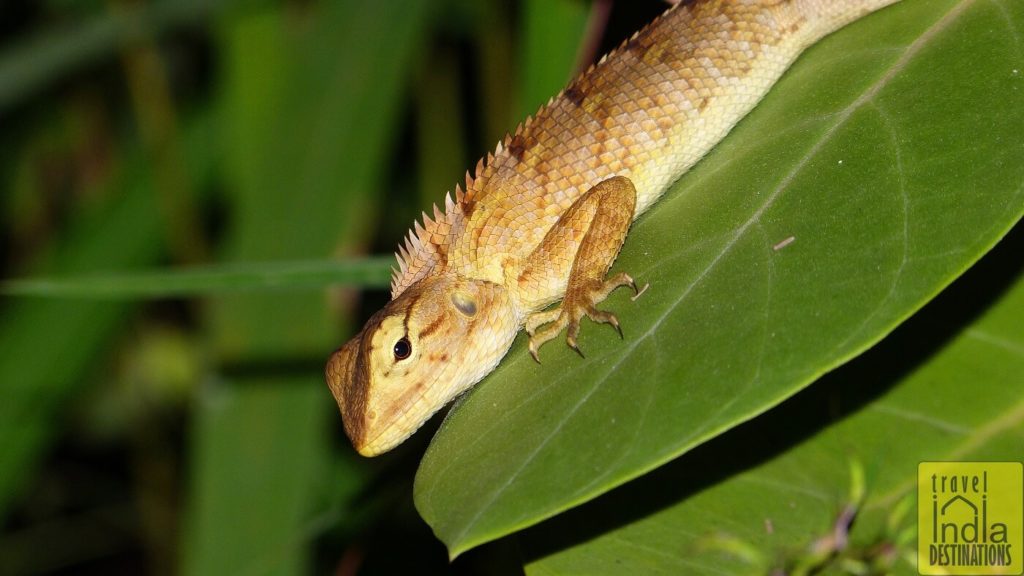
Like any other lizard, they love eating insects and small vertebraes. Oriental garden lizards have teeth but they use that only to grip their prey. They don’t tear their prey and instead swallow it. These lizards also eat vegetable matter if they don’t find enough insects. Hence, they are found in all types of weather conditions.
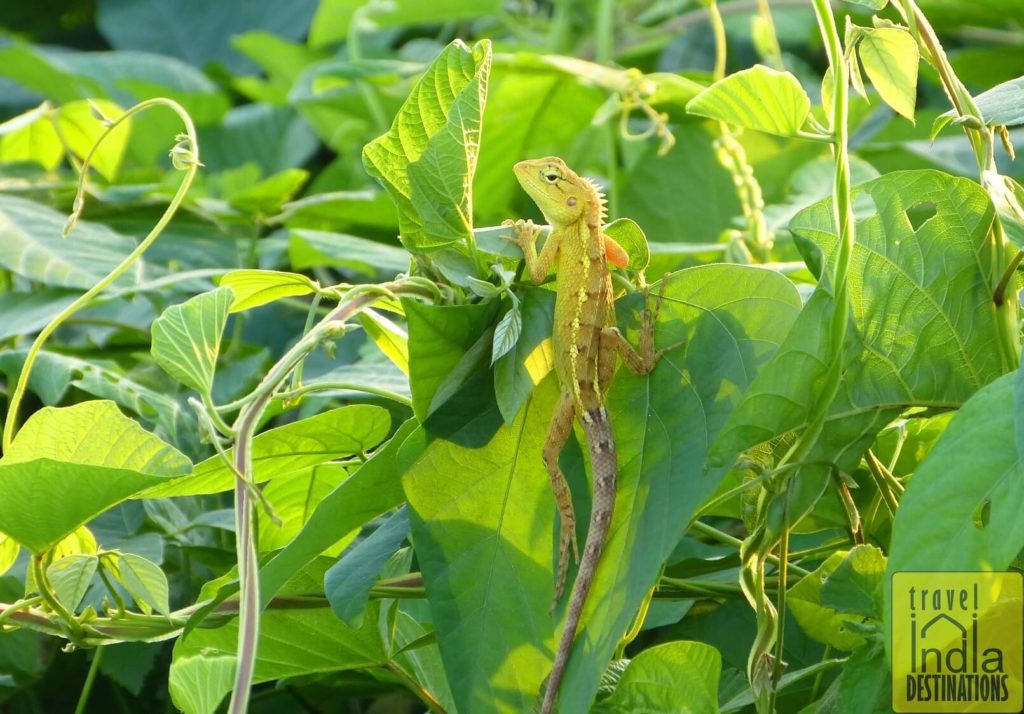
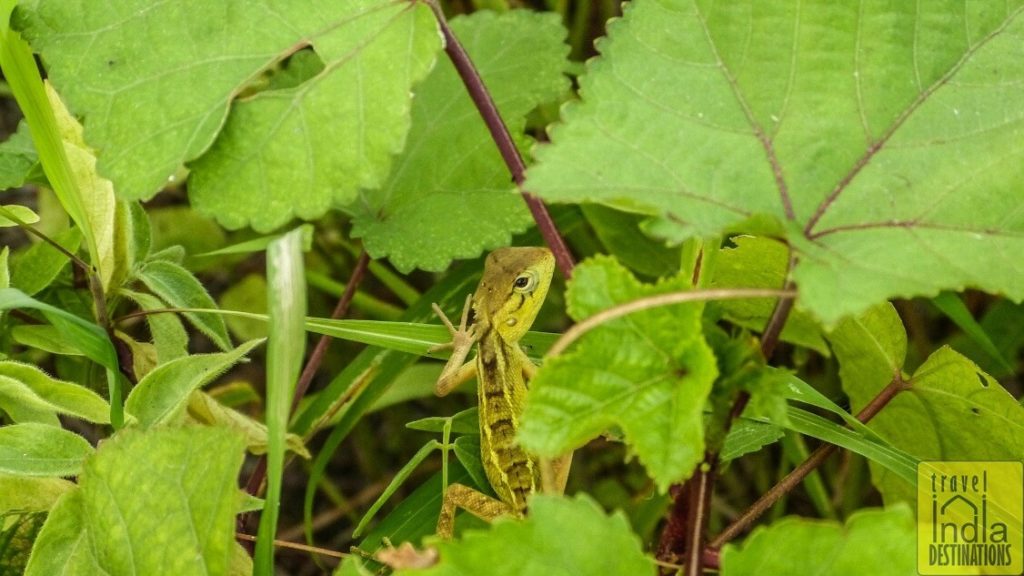
They are fast runners and they also jump from one plant to another to escape threat. While they are lizards, they do not drop their tails. They are not scared of human beings, if you don’t make quick movements to threaten them. Oriental garden lizards breed during the month of May and June.
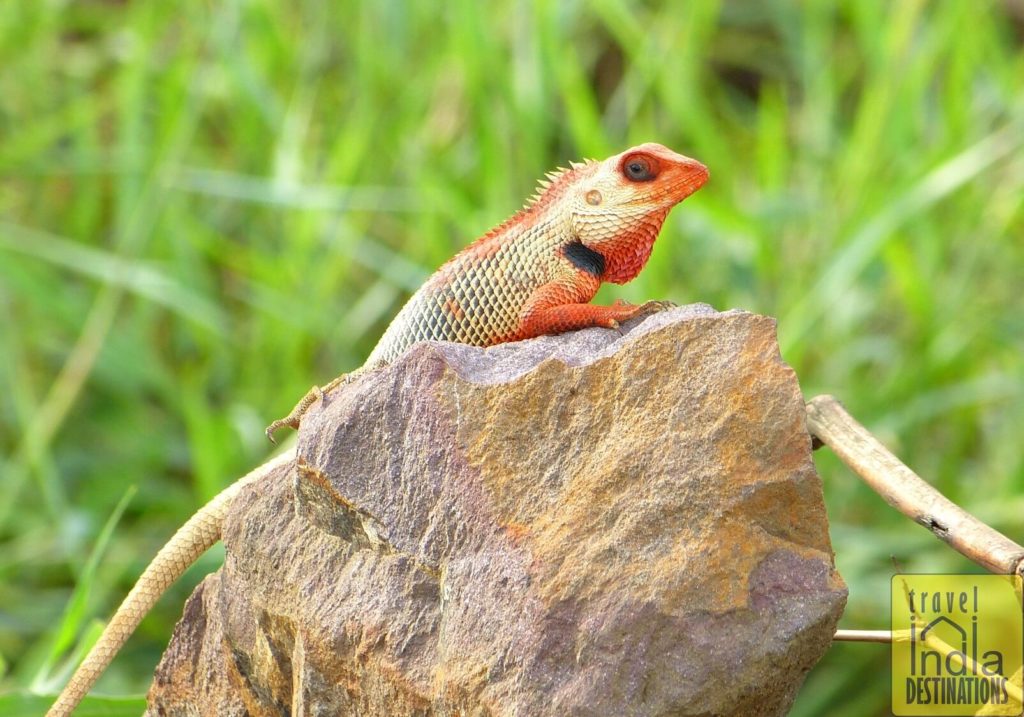
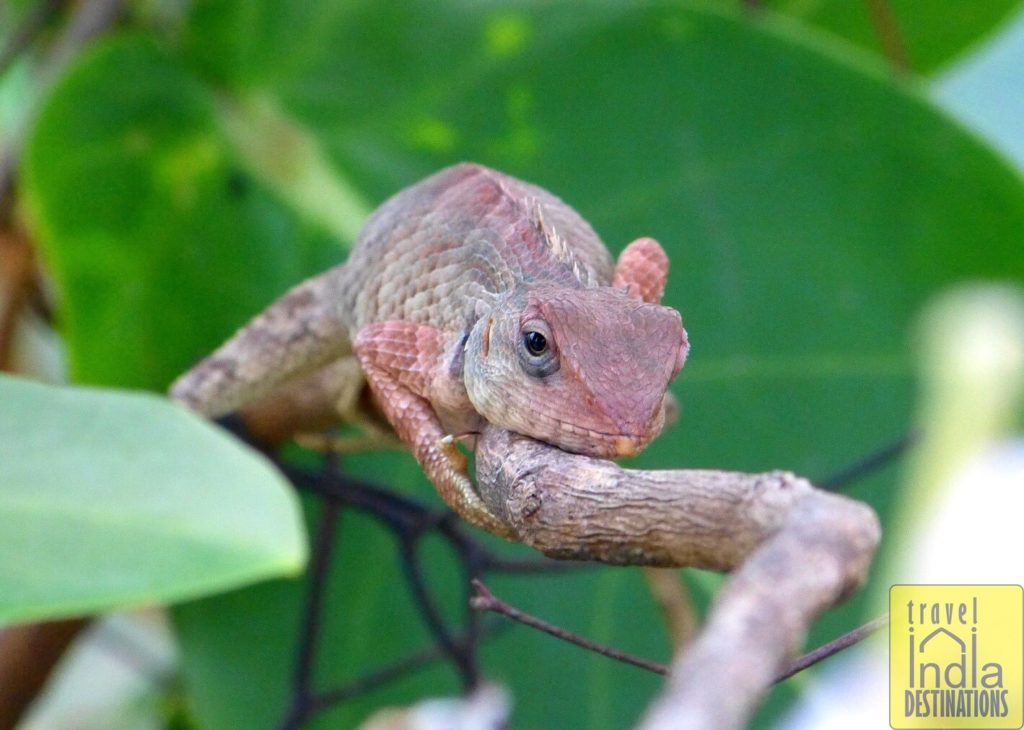
During the breeding season, the males are highly territorial and their head and shoulder area turn crimson or bright orange. They also change this colour after they have won a fight with another male.
Black Hairy Caterpillar
My first encounter with the black hairy caterpillar was quite unpleasant. These caterpillars are on the leaves and branches of the tree during the rainy season. While they are easy to spot on a bright green leaf, they are hard to see on the branches.
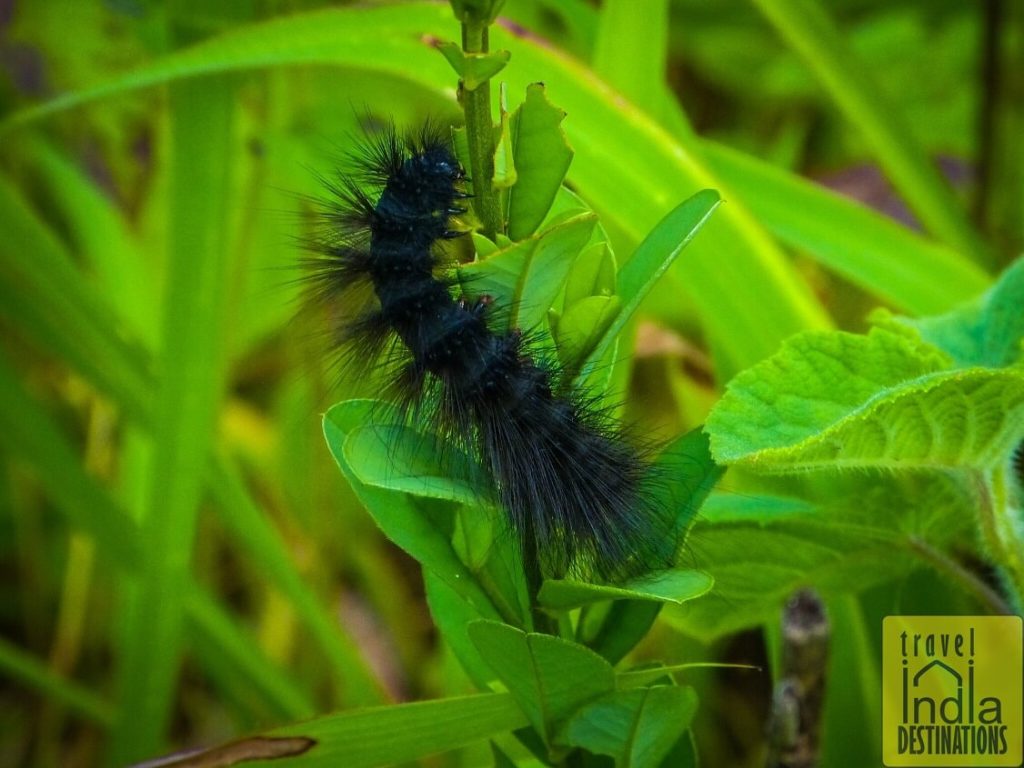
During my teens, I accidentally touched a branch that had a black hairy caterpillar. This caterpillar has tiny black spikes all around it which acts as a defence mechanism.
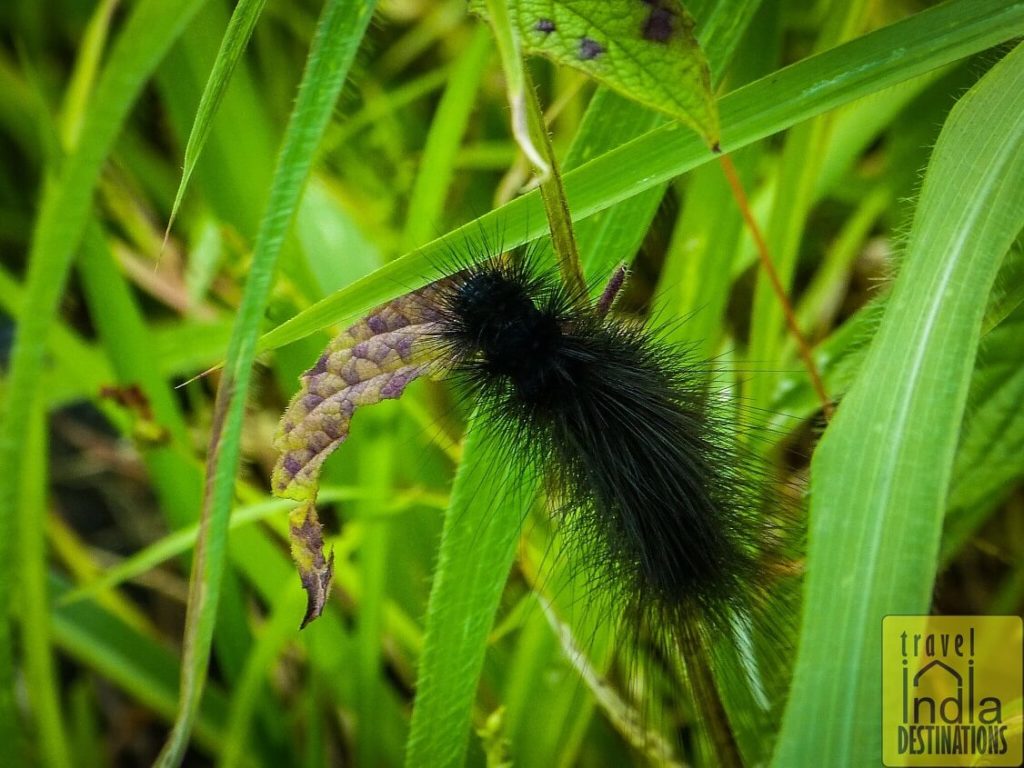
It is advisable not to touch this caterpillar because the spikes can put you in a lot of pain. Although these caterpillars are not poisonous, the pain stays for around 15 to 30 minutes before it subsides. These monsoon creatures in India are on the ground level as well. Hence, make sure you don’t step on it if you’re walking without footwear.
Common Garden Skink Lizard
Unlike the oriental garden lizard, skink lizard is very shy and will quickly retreat behind the rocks. It is hard to find them during the hot months of May, but with the arrival of the monsoon season, they appear once again.
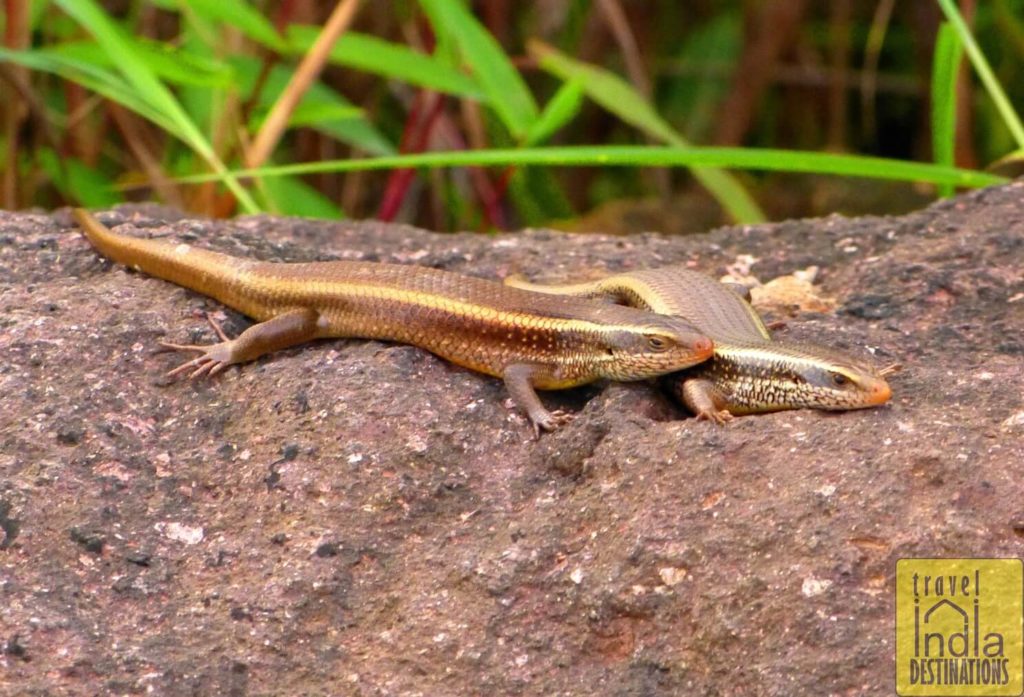
The males are brown-black in colour with a greyish tinge and the females have a yellowish-orange tinge to the underside. The females are bigger in size compared to males. They usually hide and wait for their prey to come to them.
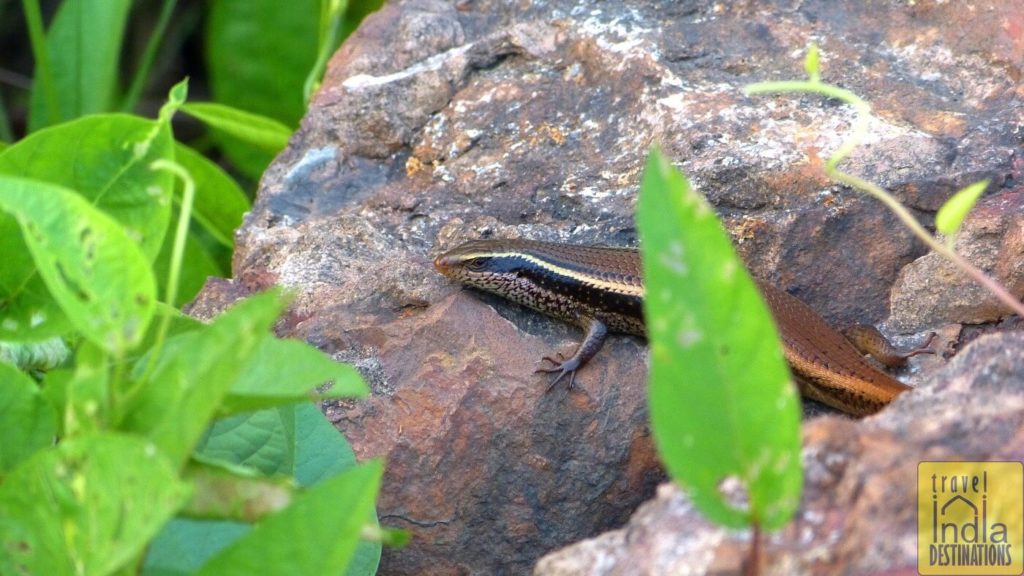
However, if they are hungry they will hunt the prey. Skinks are expert ambush hunters. They usually hide under the rock to surprise their prey and also to save themselves from large predators like garden birds. They are cold-blooded and therefore they usually relax on top of the rocks to warm their blood.
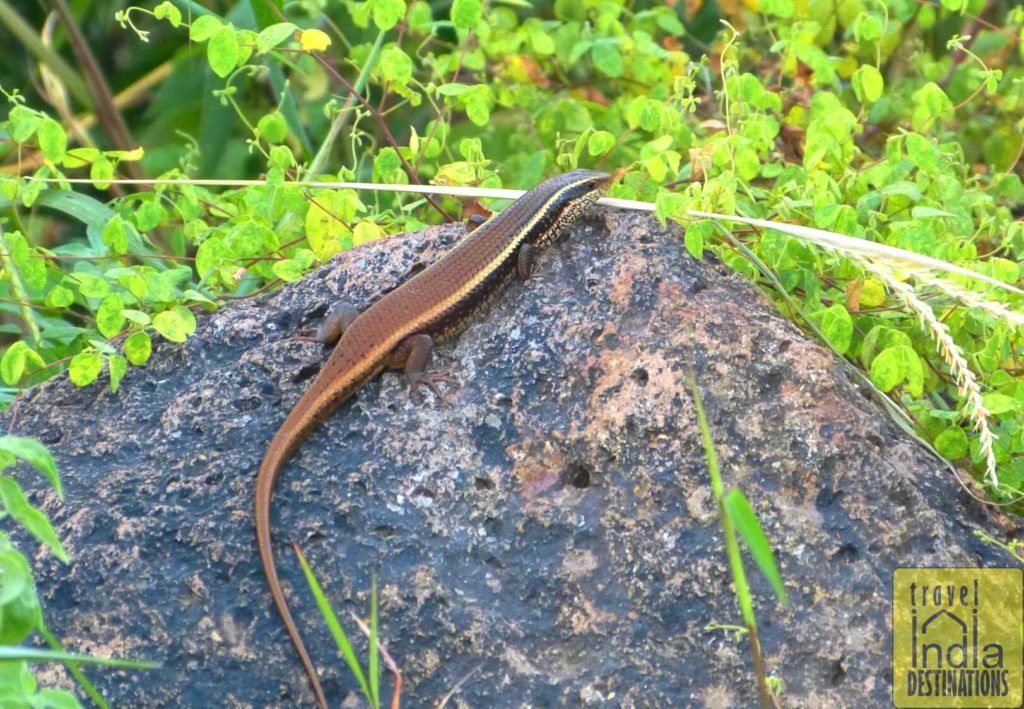
Skinks love all types of insects, worms, and small vertebrates. They love eating cockroaches, spiders, ants, crickets and moths and therefore some people prefer to have skinks in their garden. They also eat bananas and strawberries and other non-citrus fruits. You can find them all over Maharashtra as you take monsoon road trip in Maharashtra.
Indian Bullfrog
If you have ever seen a frog in India, it is likely you saw an Indian bullfrog. This is one of the commonest frog species that you can find all over the country. They are also quite popular in other Asian countries like Pakistan, Nepal, Sri Lanka, Bangladesh, Afghanistan and Myanmar.
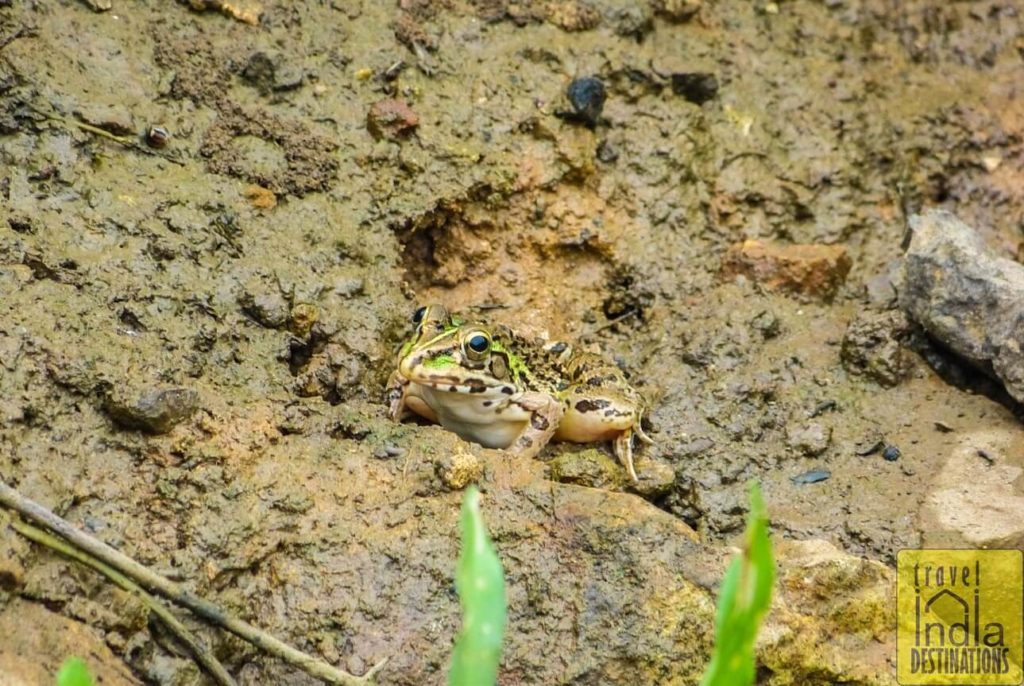
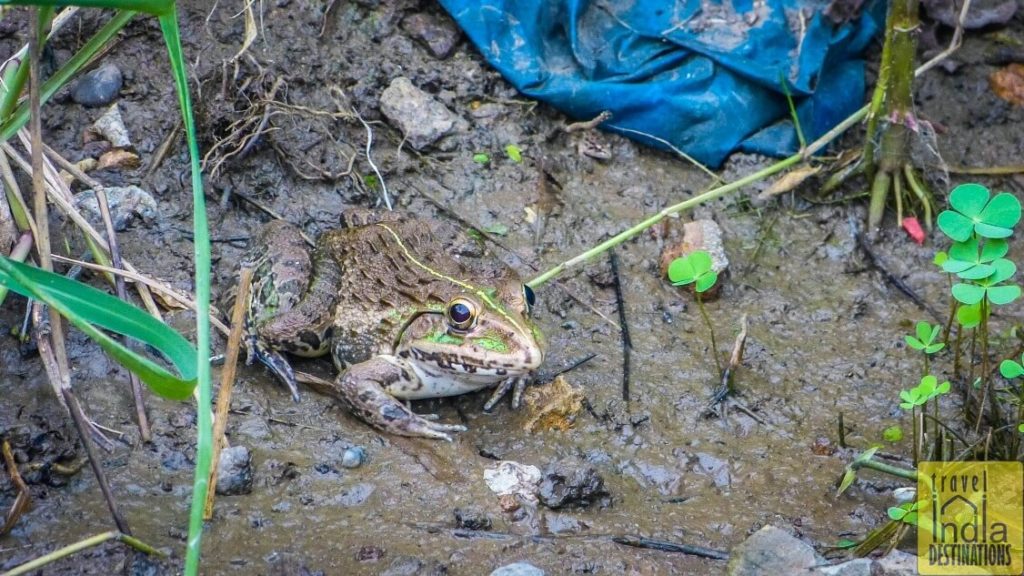
These monsoon creatures in India appear as soon as the grassland area is flooded with fresh water. Indian bullfrogs generally live a solitary life, but their breeding season starts with the arrival of the fresh monsoon season. Surprisingly, these frogs turn yellow to impress females during the breeding season.
Aak Grasshopper
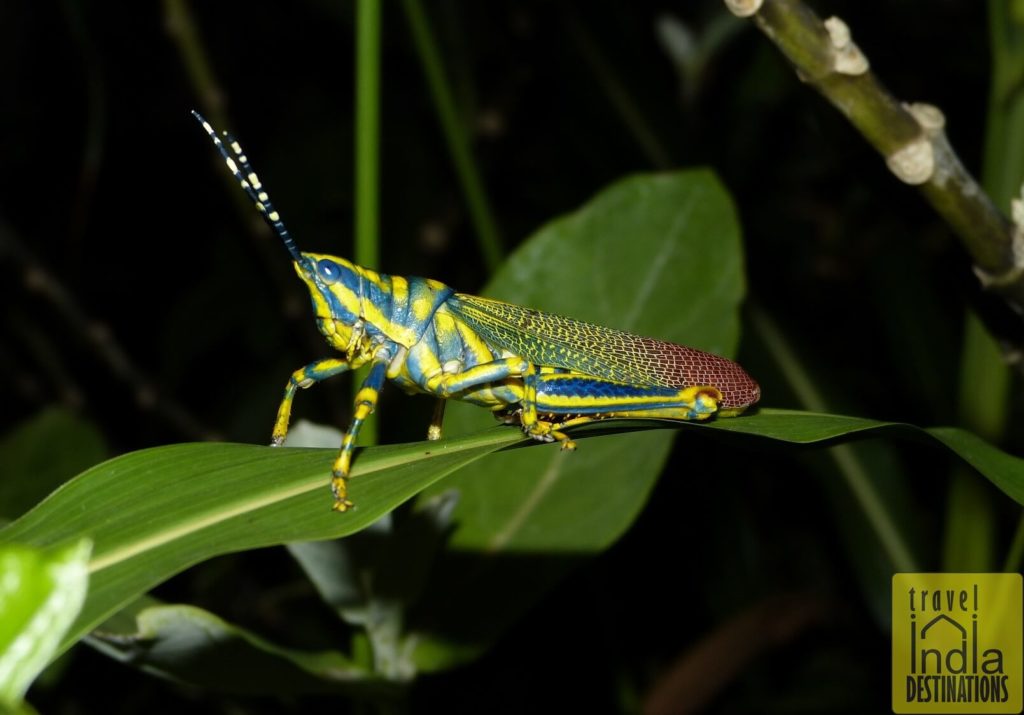
If you love colour you can’t find a better grasshopper than Aak grasshopper. It is one of the most colourful grasshoppers that you can find in India. The young grasshoppers usually have greenish yellow markings with crimson spots. A mature grasshopper will have yellow and turquoise stripes on the body along with green tegmina with yellow spots.
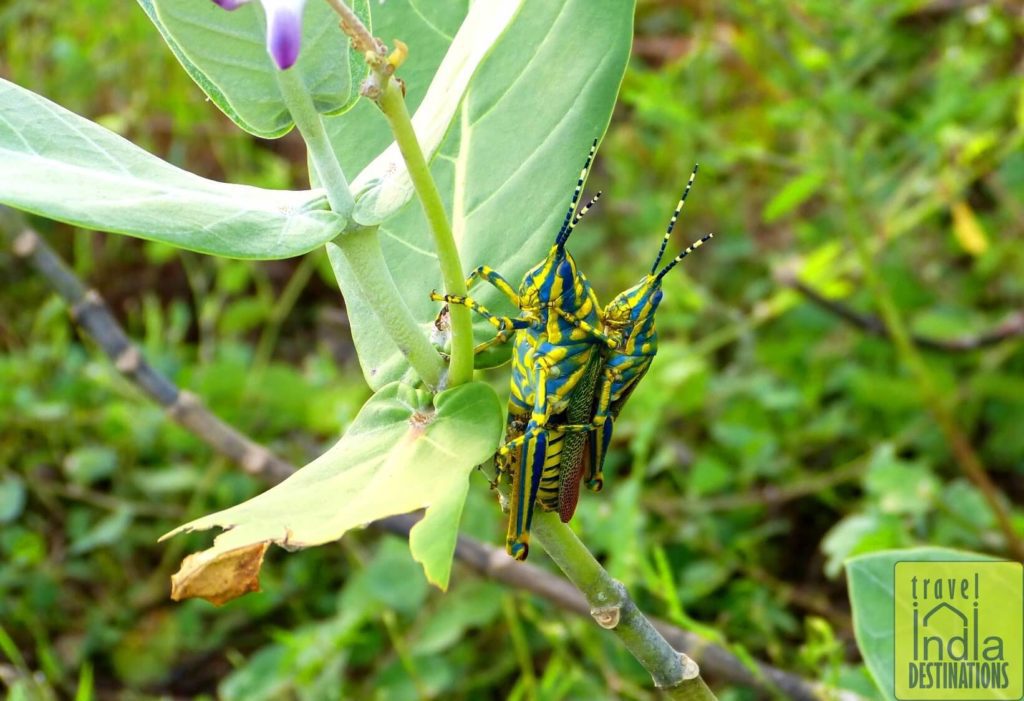
The tegmina is a leathery front wing that allows the insect to fold and protect its hind wings. Aak Grasshopper usually feeds on the Crown Flower plant and breed on the same plant. They are visible clearly during the month of September. They eject a sudden jet of pale milky secretion when they feel threatened. Hence, it is advisable that you don’t touch them in curiosity.
Below is an interesting video shot by Sarah that shows close up of Aak grasshopper eating the crown flower.
Wolf Spider
What’s Spiderman without his web shooting capabilities, right? We normally associated spiders with their web-weaving skills and how they trap their prey in it. Wolf spider is one of the rare spiders that do not spin webs. Yes, you heard it right. No web business.
The name wolf spider comes from the hunting tactics that the spider employs to hunt the prey. Unlike other spiders, wolf spiders pounce on their prey and inject venom at a lightning speed. They are an expert, agile and robust hunters in their own world.
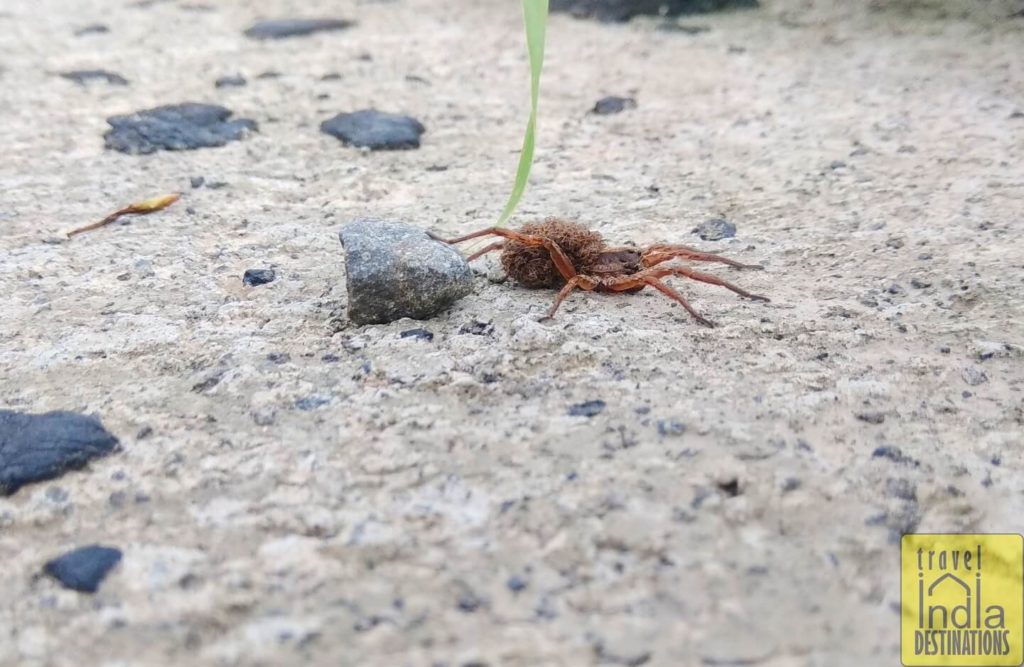
Wolf spiders have the third best eyesight of all spider groups in the world after jumping spiders and huntsman spiders. They have eight eyes arranged in a set of three rows that help them to hunt in the dark. These monsoon creatures in India prefer to live in grassland, wet coastal forest and suburban gardens.
The mother wolf spider will carry all her spiderlings on her back for several weeks until they can fend for themselves. Currently, wolf spider is the only spider in the world that carries their spiderlings on their back.
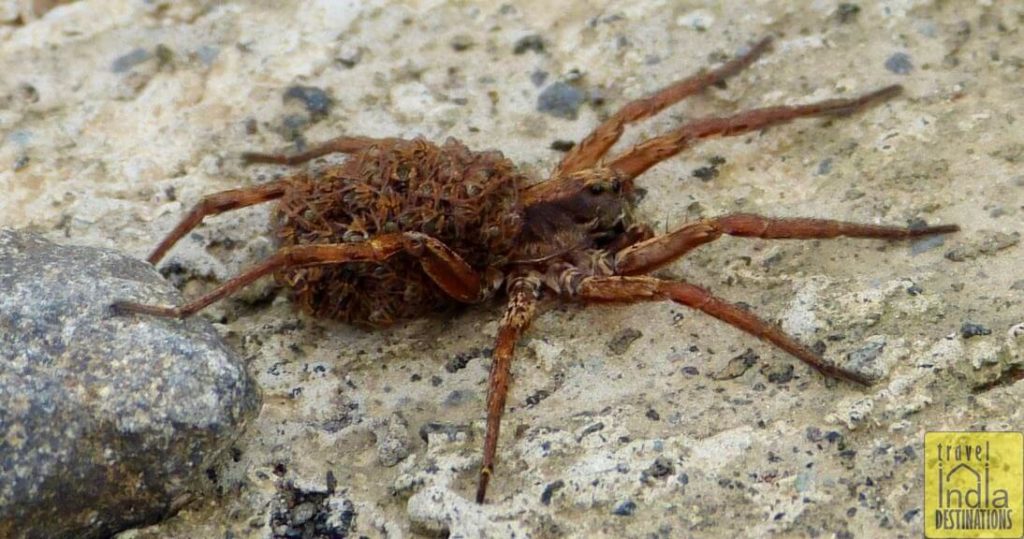
Wolf spiders are not really big and flashy that helps them blend in their habitat. They can stay still for quite some time to ambush their prey. Well, the mother wolf spider in the picture tried to fool me pretending to be dead until she felt threatened and ran into the shrubs.
Conclusion
With the arrival of the Southwest Monsoon, the landscape of India changes considerably. Migratory and aquatic birds move in for the breeding season and various insects and reptiles come up from the underground. For many people in India, monsoon can lead to more trouble like the flood. However, this annual cycle of the rainy season ensures that nature provides something to everyone.
Please share your valuable feedback in the comment section. Also, do let me know if you would like me to do another blog post similar to this.
6 comments
These guys are all pretty interesting. It’s hard to imagine how much effort it was to get all the pictures, but you have some great ones.
I’m glad that you enjoyed the pictures. There are more pictures to come in the upcoming blog posts. It was hard to fit them all in one post. Thank you for your comment.
These are stunning shots . Read about these creatures at Malshej . MTDC has charts all over with pictures of these creepy crawlers ! Your pictures are better 🙂 The black caterpillar I have seen once in SGNP . You have done a fab job ! Keep it up !
Thanks, Priyanka. There are more pictures coming up in the post next week.
I could have done without the spider — and they look just like wolf spiders here — but the rest are so interesting! We also have a variation on the skink, and the tail is very very long. Bright blue stripe when young. Love lizards and snakes — cool post!
Honestly, Kate, the wolf spider was an accidental encounter for me and Sarah. We were hunting something else and it was there on the road. Skinks have many varieties globally I believe. Thank you for your comment.